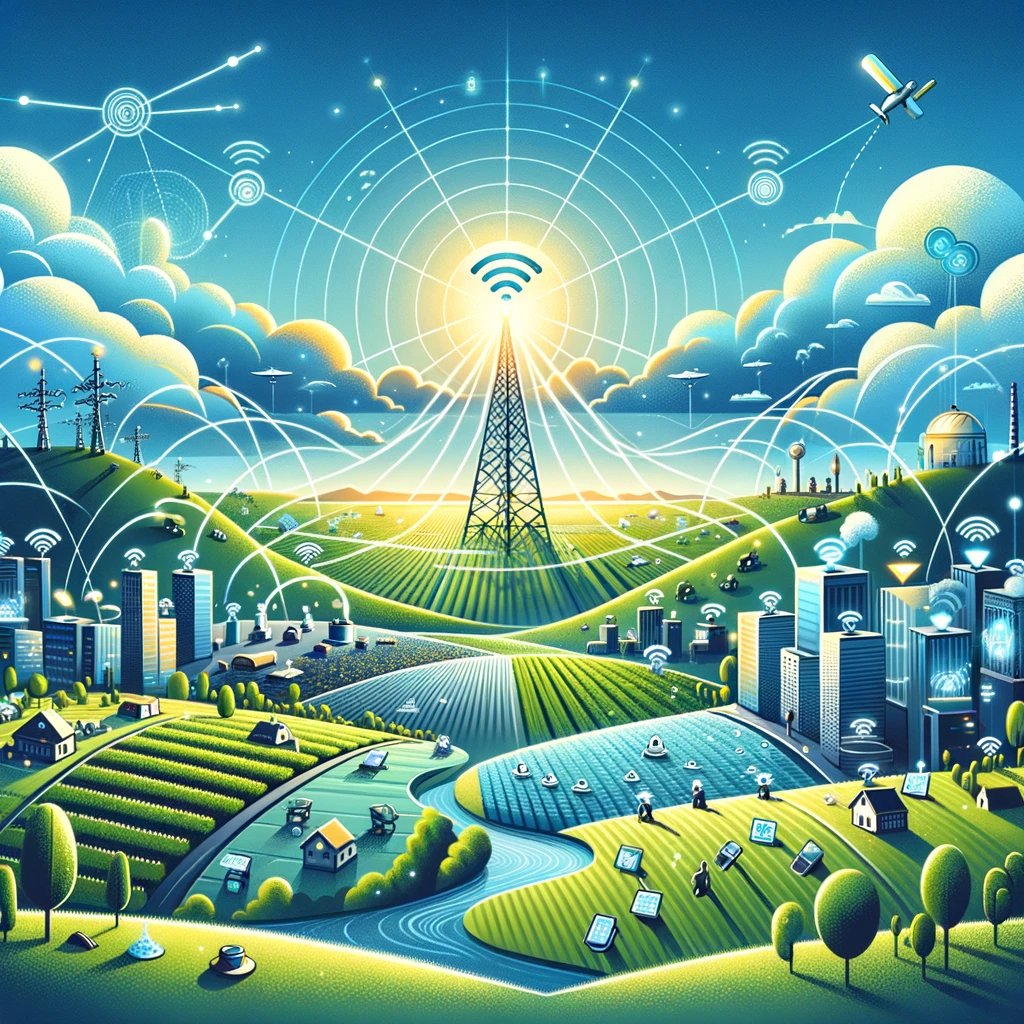
In the rapidly expanding universe of the Internet of Things (IoT), Low-Power Wide-Area Networks (LPWAN) have emerged as a pivotal technology, enabling a myriad of devices to connect over long distances while maintaining low power consumption. LPWANs are revolutionizing the way we think about connectivity for IoT devices, offering a cost-effective and energy-efficient solution for a wide range of applications, from smart cities and industrial IoT to agricultural monitoring and asset tracking. This article explores the essence of LPWAN, its key technologies, advantages, and the transformative impact it has on the IoT landscape.
Understanding LPWAN
LPWAN stands as a category of wireless telecommunication technology designed specifically for long-range communications at a low bit rate. The primary appeal of LPWAN technology lies in its ability to provide wide-area coverage with minimal power consumption, allowing devices to operate on battery power for years. This characteristic is particularly beneficial for IoT applications where devices need to send small amounts of data over vast distances without the need for frequent battery replacements or charging.
Key Technologies within LPWAN
Several technologies fall under the LPWAN umbrella, each with its unique features and use cases:
- LoRaWAN (Long Range Wide Area Network): Known for its open protocol and flexibility, LoRaWAN operates in the unlicensed spectrum, offering secure, bidirectional communication for IoT applications.
- NB-IoT (Narrowband IoT): A cellular technology that provides improved indoor coverage, support for a massive number of low-throughput devices, and low delay sensitivity.
- Sigfox: Utilizes a unique approach by providing a global network dedicated to IoT, enabling devices to communicate small messages with low power consumption and wide-area coverage.
Advantages of LPWAN
LPWAN technologies bring several key advantages to the table, making them an ideal choice for various IoT applications:
- Extended Battery Life: By optimizing power usage, LPWAN enables devices to last for years on a single battery charge, reducing maintenance costs and efforts.
- Long-Range Communication: LPWAN technologies can cover vast distances, even in challenging environments such as urban infrastructures or rural areas, making them versatile for all types of deployments.
- Cost-Effectiveness: The low power consumption and extended coverage area of LPWAN reduce operational costs, making IoT solutions more accessible and scalable.
- High Capacity: LPWAN networks can support a large number of connected devices, facilitating the growth of IoT ecosystems without compromising performance.
LPWAN’s Impact on IoT
The advent of LPWAN is transforming the IoT landscape by enabling a multitude of new applications and services. For instance, in smart cities, LPWAN facilitates the deployment of sensors for monitoring air quality, traffic flow, and public infrastructure health. In agriculture, it allows for the remote monitoring of crops and livestock over extensive areas. Furthermore, LPWAN is instrumental in asset tracking, providing companies with the ability to track the location and condition of goods in transit across vast distances.
The Future of LPWAN
As the IoT continues to evolve, the role of LPWAN technologies is set to become increasingly significant. Innovations in LPWAN standards and the integration with other technologies like 5G are expected to further enhance its capabilities, opening up new possibilities for IoT connectivity. Moreover, with the growing emphasis on sustainability and efficient resource use, LPWAN’s low-power solution aligns perfectly with the needs of the future, promising a more connected and intelligent world.
In conclusion, Low-Power Wide-Area Networks are at the forefront of enabling the next wave of IoT innovations. Through its unparalleled efficiency and coverage, LPWAN is not just a technology; it’s a foundational pillar for the IoT ecosystem, driving forward a new era of connectivity that is accessible, sustainable, and transformative.
